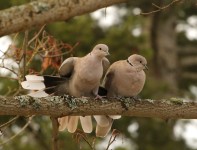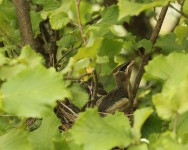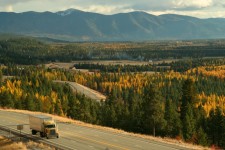Every time I drive through the valley on Copeland Road I look for pheasants near Farm to Market Road, especially in autumn and winter. Most times I’m lucky enough to see at least one pheasant run for cover into the tall grass.
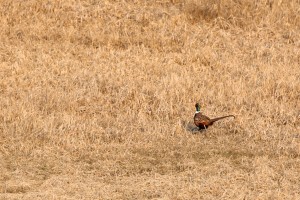
Pheasants prefer to run and hide for cover. However, they can burst into flight like grouse when startled and reach speeds of up to 60 mph.
Pheasants (more accurately ring-necked pheasants) haven’t always lived in Idaho. Ring-necked pheasants are an introduced species to the United States. They were introduced in the 1880’s from Asia to the Willamette Valley in Oregon. Since then they have increased their range–often with the help of hunters because of their popularity as a game bird.
In 1903, pheasants were introduced into Idaho near Kamiah in the Clearwater River drainage. By 1930 they were well-established in lowland agricultural belts across Idaho. Their distribution across Idaho is patchy since they coincide mainly with agricultural land.
Habitat and weather are the major factors that influence pheasant populations. Good habitat includes agricultural fields for food and tall vegetation for cover.
Pheasants need vegetation to forage in, to roost in at night and to shelter in during severe weather. Vegetation includes grass ditches, hedges, marshes, woodland borders and brushy areas.
Despite good habitat, weather can wreck havoc on pheasant populations. In good habitat pheasant survival is 95 percent during mild winters and only 50 percent during severe winters. Pheasants living in poor habitat only have a 20 percent chance of surviving a severe winter.
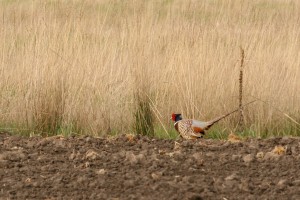
Male ring-necked pheasants have a white ring around their neck; gold, brown, green, purple and white plumage; and a blue and green head with a red wattle.
Vegetative cover that grows along fence lines, grassy roadsides, ditches and wetlands can be five degrees Fahrenheit warmer within than out in the open. The few degree difference helps pheasants since they don’t gain much fat for winter. During extreme winter weather, pheasants can survive up to two weeks without feeding by reducing metabolism and energy requirements.
Even if winter winds are cold, they blow farm fields free of snow and uncover other areas to forage. During winter, pheasants capitalize on waste grain left in fields from harvest along with other seeds and grasses. During the rest of the year pheasants forage on seeds, leaves, roots, wild fruits, nuts and insects (such as grasshoppers, beetles, caterpillars, ants, snails, crickets and earthworms).
Adult pheasants are primarily granivorous (grain eaters) but will feed heavily on insects during warm autumns. Pheasant chicks are primarily insectivorous which allows them to grow rapidly–from about 0.04 pounds at birth to 0.5 pounds at five weeks old.
Since chicks depend on high-protein insects for rapid growth, they often suffer during hot, dry summers when insect populations aren’t as abundant. Hot, dry summers also stunt vegetative growth which means less cover for pheasants during winter storms.
On the other hand, rain helps vegetation grow, creating nesting cover for winter and attracting insects for young. However, untimely heavy rains can wash nests away or even wash young out of a nest if they can’t escape. Additionally, cold, wet spring weather makes chick survival difficult because newborn chicks cannot regulate their own temperature until they are three weeks old.
Luckily, female pheasants are persistent nesters–they re-nest if a clutch of eggs is destroyed (often multiple times). However, they won’t re-nest if chicks are lost. With pheasants being persistent and prolific nesters (clutches average 12 chicks), populations rebound after severe winters if there is good habitat.
Despite severe weather, pheasants have taken a stronghold across most of the United States including the Kootenai Valley–allowing us to see the bright plumage of male ring-necked pheasants occasionally.

